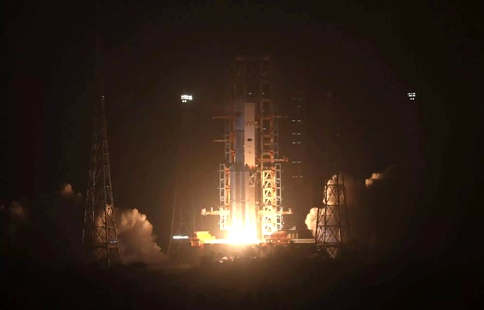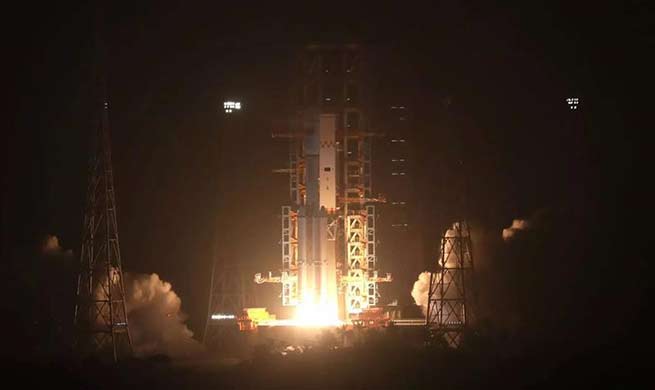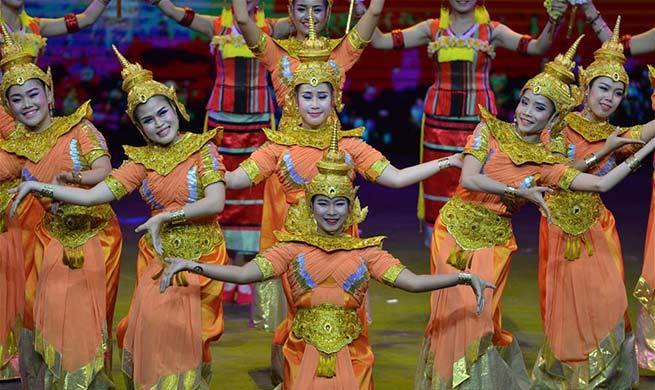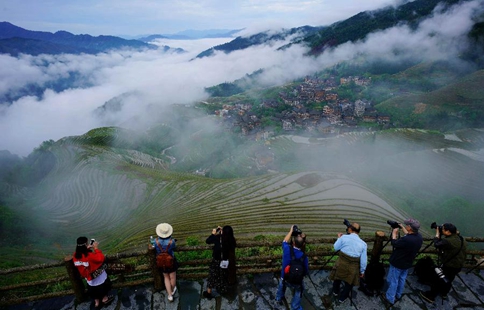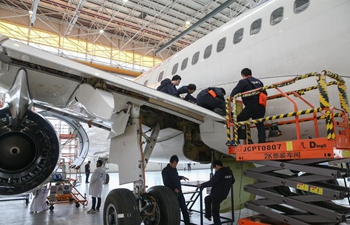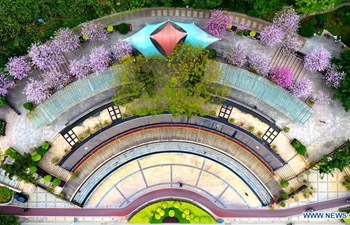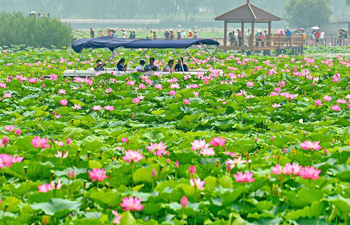XI'AN, April 19 (Xinhua) -- The mythic hero Hou Ji is said to have taught Chinese people to grow grain in the Yangling region some 4,000 years ago. Today, the agricultural zone has attracted teams from across the world to learn apple-growing techniques.
White-blossomed apple trees adorn the 35 hectares of this orchard in Yangling District, a high-tech agricultural zone in Xianyang City of Shaanxi Province. Unlike apple trees elsewhere, they appear shorter.
"We are using a new technique to keep the trees shorter and planted more densely to facilitate management and improve effectiveness," said Zhang Xiaocai, who is in charge of technology at the Huicheng fruit company.
Thousands of kilometers away in Kazakhstan, the same technique is used on 10 hectares of an orchard.
"We provide technical support, teaching them how to make organic fertilizer and how to trim the branches," Zhang said.
Kazakhstan began sending teams to learn the technique in 2013, after finding that the yield of apples per hectare in Yangling is 7,500 to 15,000 kilograms higher. An orchard using Chinese technology was built in Kazakhstan the next year.
"We now receive phone calls from Kazakhstan from time to time, asking for instructions," said Zhang. She added that the orchard was only the first step of their cooperation with Kazakhstan, which plans to import seedlings from China.
Kazakhstan is not the only country to cooperate with Yangling. In the orchard, students of a 25-day workshop are learning about water-saving irrigation. They come from colleges, institutes and governments in Mongolia, Nepal, Tanzania, South Sudan and Sri Lanka.
"While sharing our technology, we learn from others as well," said Guo Lanjun, general manager of Huicheng. They imported quality seedlings from foreign countries, like the green apple from Australia, which is popular among customers with high blood sugar.
With its age-old agricultural civilization, Yangling has trained some 1,500 people from more than 100 countries in agricultural knowledge and techniques in recent years.
The Shaanxi provincial government has done its utmost to promote modern agriculture exchanges and cooperation with relevant countries and regions under the Belt and Road Initiative, a grand trade and infrastructure plan proposed by China in 2013.
Building upon ancient trade routes, the modern Belt and Road will be a transnational network connecting Asia with Europe and Africa and promoting common development among all countries involved.
Over the past three decades, Shaanxi Province has earned a sterling reputation worldwide because of its apples. One in every seven apples in the world is grown in Shaanxi.
According to Xi'an Customs, enterprises in Shaanxi exported 200,000 tonnes of apples in 2016 with a total value of more than one billion yuan (around 150 million U.S. dollars). Countries along the Belt and Road are major consumers of Shaanxi apples.
Thailand, Myanmar, India, Bangladesh and Indonesia are the top five among 24 countries and regions that imported Shaanxi apples last year, according to Fan Hailong, deputy head of the Shaanxi fruit industry management bureau.
"We feel proud after seeing more and more Shaanxi apples on the supermarket shelves in India," said Han Jilong, vice general manager of Shenglong Fruit Industry Company in Baishui County, which is called "China's apple town."
Founded in 2008, the company became the biggest exporter among fruit companies in the province last year, with apple exports worth more than 19 million U.S. dollars.
"If silk and porcelain were the signatures of ancient China, the apple may serve as a symbol for modern China, especially western China," said He Cheng, the Xi'an office chief of the Kazakhstan International Integration Fund.






